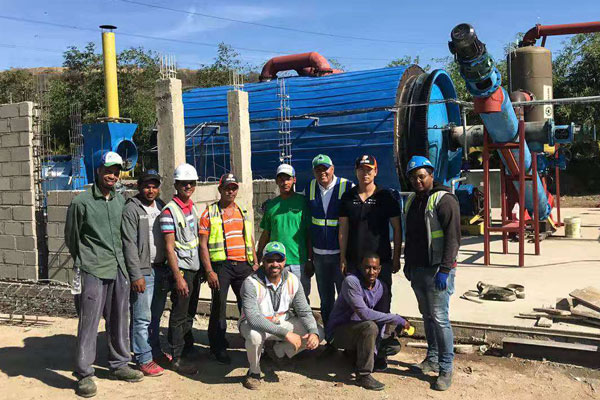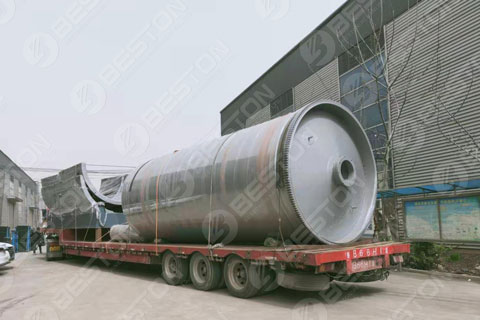Have you ever wondered what happens to the mountains of waste that we generate every day? Waste management is a significant challenge worldwide, with landfills overflowing and environmental concerns mounting. However, there is an innovative solution known as waste pyrolysis that has the potential to revolutionize waste disposal while simultaneously producing a valuable resource: oil.
Waste pyrolysis is a process that involves heating organic waste materials, such as plastics, rubber, biomass, and even sewage sludge, in the absence of oxygen. This lack of oxygen prevents complete combustion and instead triggers a thermochemical decomposition of the waste. Through this controlled heating process, various valuable products are generated, with one of the most significant being oil.
The waste pyrolysis technology breaks down complex hydrocarbons found in waste materials into simpler molecules, which can then be refined into different types of oil products. These oils can include pyrolysis oil, bio-oil, or even synthetic crude oil, depending on the starting waste material and the specific pyrolysis process employed. So, the pyrolysis plant is a profitable machine.

The benefits of waste pyrolysis extend beyond waste reduction. Firstly, it significantly reduces the volume of waste, minimizing the need for landfill space. Secondly, the production of oil through this process offers an alternative source of energy, reducing our dependency on traditional fossil fuels. Moreover, waste pyrolysis can help mitigate greenhouse gas emissions by diverting waste from landfills, where it could release harmful methane gas, a potent contributor to climate change.
Additionally, waste pyrolysis presents opportunities for resource recovery. The oil produced can be used as a feedstock in various industries, including refineries, chemical plants, and power generation facilities. It can be further processed to yield valuable chemicals and fuels, contributing to a circular economy approach by creating a closed-loop system for waste conversion.
However, it’s crucial to note that waste pyrolysis technology is still developing, and several challenges need to be addressed. These include the high initial capital costs, ensuring proper waste selection and sorting for optimal results, and implementing stringent environmental regulations to prevent any negative impacts on air quality or soil contamination. If you wanna see a case, view pyrolysis machine in Zimbabwe.

In conclusion, waste pyrolysis offers a promising solution to tackle the growing waste management crisis while simultaneously producing oil and reducing our reliance on fossil fuels. With further advancements and investments in this field, waste pyrolysis has the potential to transform waste into a valuable resource, contributing to a cleaner, more sustainable future.
Furthermore, waste pyrolysis promotes a shift towards a more sustainable and circular economy. By converting waste into oil, it enables the reuse and repurposing of materials that would otherwise end up in landfills or incinerators. This technology aligns with the principles of the 3Rs: Reduce, Reuse, and Recycle.
One of the significant advantages of waste pyrolysis is its versatility. It can process a wide range of waste materials, including plastic waste, tires, agricultural residues, and even sewage sludge. This flexibility allows for the effective management of different types of waste streams, maximizing resource recovery and minimizing environmental impact.
Moreover, waste pyrolysis addresses the issue of plastic pollution, which has become a global concern. Plastics are notoriously difficult to degrade, leading to long-lasting pollution in ecosystems. Through waste pyrolysis, plastics can be converted into valuable oil products, serving as a form of recycling that not only reduces waste but also helps combat plastic pollution.
The potential applications of the oil produced from waste pyrolysis are extensive. It can be used as a fuel for heating, electricity generation, or as a feedstock for chemical processes. The diverse range of industries that can benefit from this oil includes transportation, manufacturing, and energy production. By utilizing this resource, we can reduce our reliance on conventional fossil fuels and contribute to a greener and more sustainable energy landscape. When you search manufacturers, Beston Group would give you pyrolysis plant cost estimate.
However, it’s essential to emphasize the importance of responsible waste management practices alongside waste pyrolysis. While this technology offers numerous benefits, it should not be seen as a stand-alone solution. Implementing comprehensive waste reduction strategies, promoting recycling and reuse, and encouraging eco-friendly product design are equally crucial in tackling the root causes of waste generation.
In conclusion, waste pyrolysis presents an exciting opportunity to convert waste into a valuable resource, particularly oil. This innovative technology offers environmental, economic, and societal benefits by reducing waste volumes, producing alternative energy sources, and contributing to a circular economy. With continued research, development, and adoption, waste pyrolysis has the potential to play a significant role in our journey towards a more sustainable future.